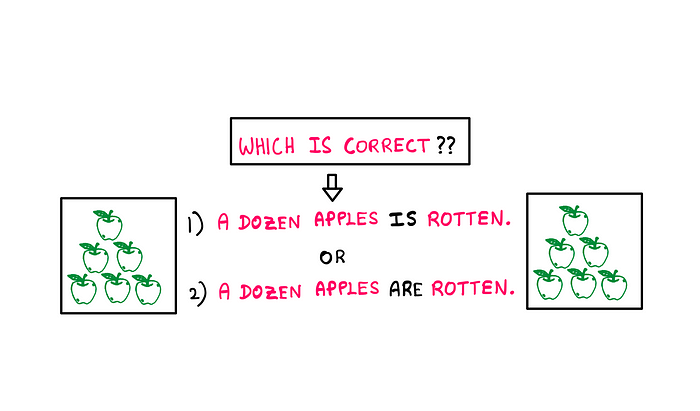Understanding Units: From Everyday Life to Mathematics
Written on
Chapter 1: Introduction to Units
In order to grasp the concept of units in mathematics, it's essential to first consider how we use units in our daily lives. You might be asking, "Where exactly do we encounter units in our everyday activities?" The truth is, units are a part of our lives constantly.
For instance, think back to the last time you checked your weight on a scale. If the reading was in kilograms, that's a unit of measurement. However, people in other regions might use pounds instead. So why do we have different units for the same measurement? It might seem a bit confusing, right?
Now, imagine a scenario where everyone suddenly agrees to use kilograms exclusively. A chef might protest, lamenting that he has always measured his ingredients in grams, not kilograms! Are you starting to feel a bit perplexed? Let's explore this further.
Consider that you purchased a dozen apples from a store. To your dismay, you discover all 12 apples are spoiled. In this case, which of the following is grammatically correct?
- A dozen apples is spoiled.
- A dozen apples are spoiled.
I’ll reveal the answer at the conclusion of this discussion, but this question highlights the significance of understanding units.
Section 1.1: The Basics of Units
It’s important to realize that while "dozen" may not resemble "gram" or "kilogram," it functions as a unit in a mathematical context. Let’s assume your apples are fresh. If you take one apple from your dozen and slice it into twelve pieces, then consume one slice, you’ve created units in various forms: one slice, one apple, and a dozen.
These units can represent quantities in diverse contexts. There are two primary methods for creating units:
- Partitioning
- Combining
Subsection 1.1.1: Creating New Units

To illustrate, a "dozen" is a combined unit, requiring twelve items, while a slice represents a partitioned unit, as an apple can be divided into multiple slices. The beauty of these concepts is that they allow for continuous partitioning and combining to generate new units.
For example, you might further divide a slice into smaller pieces or gather 100 apple slices into a box, thus creating a new unit: a box of apple slices. While these ideas may seem straightforward, they are foundational to understanding units in mathematics.
Chapter 2: Units in Mathematics
So, how do we comprehend units within mathematics? While we may not use units like kilograms or pounds in mathematical operations, the concept remains relevant. Consider the number '1'; we know that 1 equals 1. Yet, we can combine several '1's to form a new number:
1 + 1 + 1 + 1 + 1 + 1 + 1 + 1 + 1 + 1 = 10
In this equation, the result is 'ten,' which contains a unit. You might remember from school that the '1' in '10' signifies one group of ten.
This signifies that the '1' in '10' is a unit that counts the number of tens represented. We can break '10' down into ten '1's or combine ten '10s to form '100'. The '1' in '100' quantifies the number of hundreds present.
The principles of partitioning and combining in mathematics mirror those in real life, although they operate at a more abstract level. In reality, you might collect 100 apple slices in a box and refer to it as a "box of apple slices," using the same unit in an entirely different context.
The first video titled "Learn Metric Units & Unit Conversions (Meters, Liters, Grams, & more) - [5-8-1] - YouTube" provides a detailed explanation of metric units and how to convert between them. It’s a great resource for understanding how different units work together.
The second video titled "Math Antics - Intro to the Metric System - YouTube" serves as an engaging introduction to the metric system, helping to solidify your understanding of units in a fun and accessible way.
Final Thoughts
Returning to our initial question, which of the following statements is correct?
- A dozen apples is spoiled.
- A dozen apples are spoiled.
The correct answer is "A dozen apples are spoiled." This conclusion is not merely mathematical; it also involves the rules of English grammar. "Dozen" functions as a collective noun, similar to "box" in "box of apple slices." When referring to the box, you would say, "The box of apple slices is broken," as you are addressing the box directly. However, when using "dozen," it behaves like a number, so we say "a dozen apples," similar to saying "ten apples."
This can be complex, but I hope this exploration of units in both mathematics and everyday life has been helpful. Thank you for joining me on this journey through the world of units!